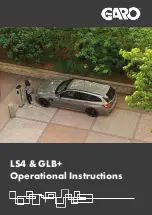
If the issue is suspected to be with the vehicle, inspect the charge port inlet and the Mobile Connector handle for any
obstructions (use a flashlight as necessary). Debris, moisture, and/or foreign objects present in the charge port inlet
or the Mobile Connector handle can prevent the vehicle from properly communicating with the Mobile Connector.
It is recommended that any debris / foreign objects be removed and any moisture be allowed to dry. Afterward, try
re-inserting the Mobile Connector handle into the charge port. Charging should now be possible.
As this alert is usually specific to external charging equipment and power sources, and it does not typically indicate
an issue with your vehicle that can be resolved by scheduling service, it is recommended that you:
• Try charging with multiple, different types of charging equipment.
• Make sure any charge port inlet or charge handle obstruction has been removed.
You can also try charging your vehicle using a Tesla Supercharger or Destination Charging location, all of which can
be located through the map on your vehicle's touchscreen display. See
Maps and Navigation on page 143
for more
details. Additional third-party charging stations may also be available in your area to help you to pinpoint the issue.
For more information on troubleshooting Mobile Connector status lights and charging issues, refer to the
For more information on charging, see
Charging Instructions on page 173
(UMC_w012)
Charging equipment communication error
Try again or try different equipment
Your vehicle is unable to charge because it cannot communicate effectively with the Mobile Connector. The Mobile
Connector detects that it cannot generate or maintain a valid control pilot signal.
First, confirm the lack of effective communication is caused by the Mobile Connector rather than an issue with your
vehicle. This is usually the case.
To confirm this, try charging the vehicle using different external charging equipment.
• If the vehicle begins charging, the issue was likely with the Mobile Connector.
• If the vehicle still does not charge, the issue may be with the vehicle.
If the issue is suspected to be with the vehicle, inspect the charge port inlet and the Mobile Connector handle for any
obstructions (use a flashlight as necessary). Debris, moisture, and/or foreign objects present in the charge port inlet
or the Mobile Connector handle can prevent the vehicle from properly communicating with the Mobile Connector.
It is recommended that any debris / foreign objects be removed and any moisture be allowed to dry. Afterward, try
re-inserting the Mobile Connector handle into the charge port. Charging should now be possible.
As this alert is usually specific to external charging equipment and power sources, and it does not typically indicate
an issue with your vehicle that can be resolved by scheduling service, it is recommended that you:
• Try charging with multiple, different types of charging equipment.
• Make sure any charge port inlet or charge handle obstruction has been removed.
You can also try charging your vehicle using a Tesla Supercharger or Destination Charging location, all of which can
be located through the map on your vehicle's touchscreen display. See
Maps and Navigation on page 143
for more
details. Additional third-party charging stations may also be available in your area to help you to pinpoint the issue.
For more information on troubleshooting Mobile Connector status lights and charging issues, refer to the
For more information on charging, see
Charging Instructions on page 173
Troubleshooting Alerts
256
MODEL X Owner's Manual













































